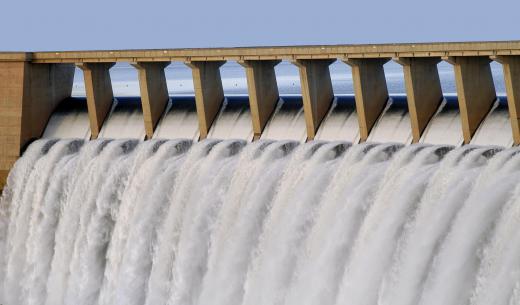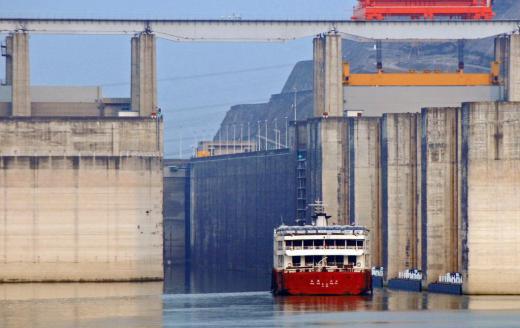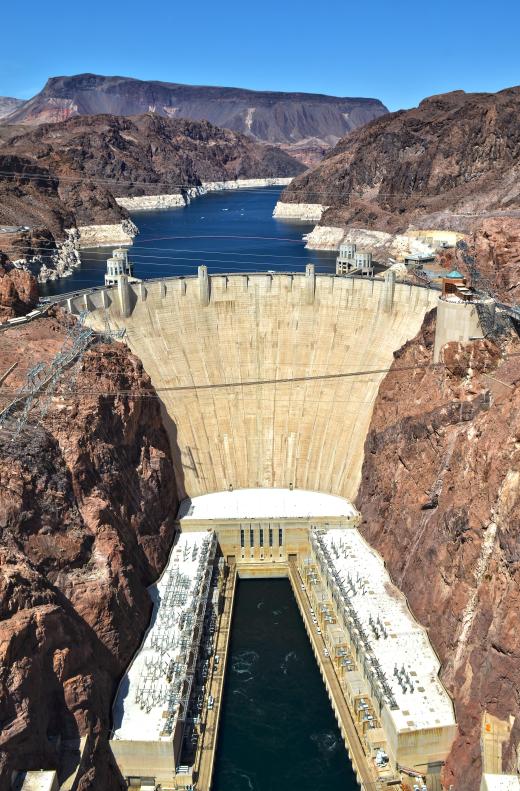Hydroelectric generators can turn the energy of moving water into usable electricity. This is most commonly accomplished by damming a river and then directing the water through one or more turbines. As the water causes the turbines to spin, they in turn operate electric generators. While damming rivers can have environmental repercussions, hydroelectric generators are typically considered to be a primary source of clean, renewable energy. About 20% of the electricity in the world comes from hydroelectric generators, which accounts for most of the electricity generated by renewable sources.
Most hydroelectric generators are part of dam installations that use man made reservoirs, though there are a number of other ways of tapping into hydropower. Run-of-river generators operate in much the same way as traditional dam and reservoir generators, though they typically have little or no reservoir capacity. Instead of creating an artificial blockage of flow and change in elevation, run-of-river power generation makes use of natural water flow and river characteristics. In order for a run-of-river plant to generate consistent electricity, the river it is installed on typically must have a consistently high flow of water.

The movement of water in daily tidal flows can also be harnessed by hydroelectric generators. This is usually accomplished by installing turbines in a tidal zone that are operated by the daily fluctuation of the tide. It is sometimes possible to build reservoirs into these systems, allowing for additional generator capacity in high demand situations.

Another way that additional hydroelectric generator capacity can be added to a system is through pumped storage. This system can be used in conjunction with a traditional dammed hydroelectric plant, or in a standalone capacity. During times when electricity demand in an area is low, water can be pumped up to high elevation reservoirs. Then when demand increases, the stored water can be used to increase generator capacity. These pump systems ultimately generate less power than is used to fill the reservoirs, but pumped storage for hydroelectric generation can be a key method of grid energy storage in some areas.

Some hydroelectric power generation can have environmental consequences, particularly when large dam installations are involved. A potentially undesirable consequence of some dams is how they can effectively carve up the ecosystem of a river. While some dams include fish ladders to allow certain species to travel upriver to spawn, other fish may not be able to make use of them. This can interfere with the life cycle of some species, or reduce the biodiversity of certain populations.
Dams can also have positive effects, such as providing flood control and a reliable source for irrigation. The reservoirs may also be used for aquaculture and recreation. Unlike most ways of generating electricity, hydroelectric generators do not produce greenhouse gases like carbon dioxide (CO2). Some CO2 and other pollutants may be created in the construction of the generators, though they are typically very clean once operating.
